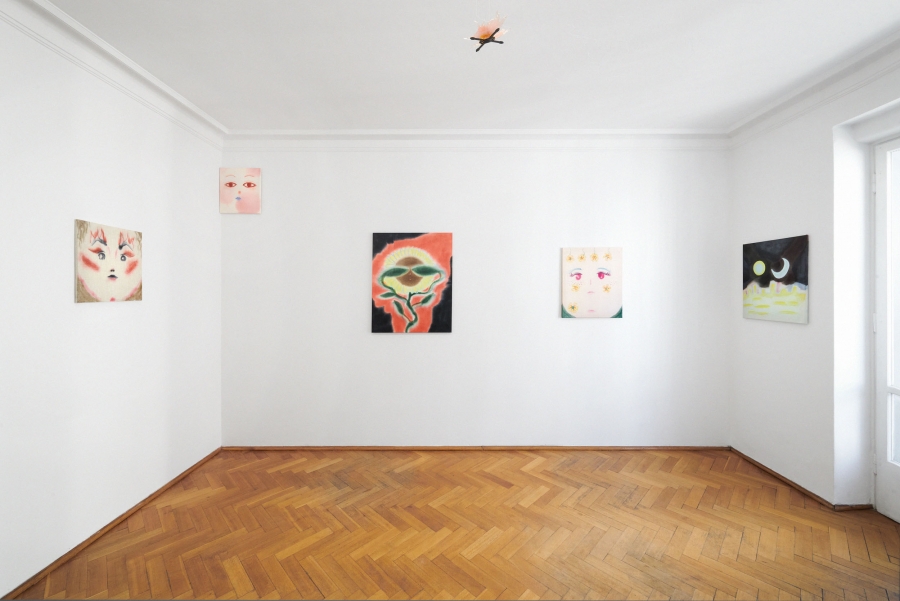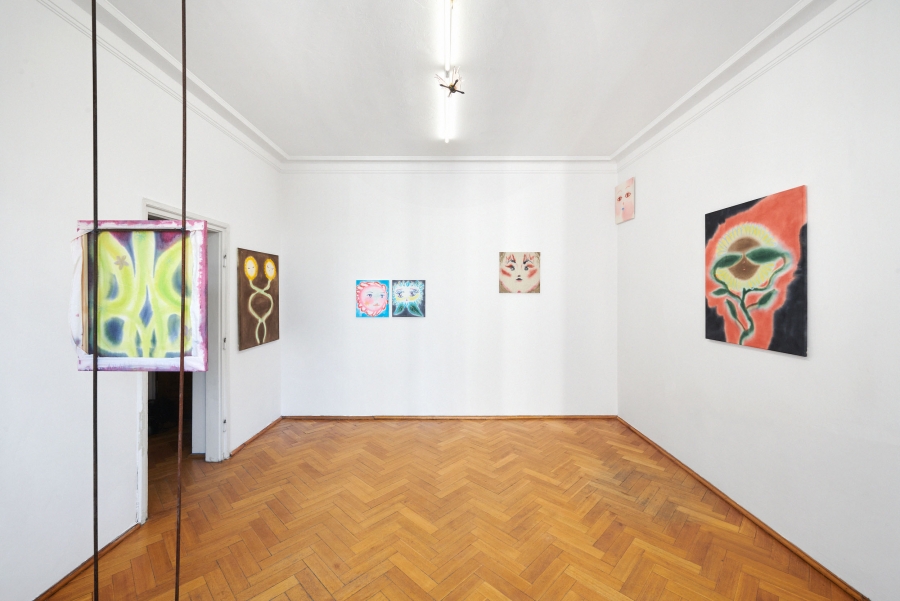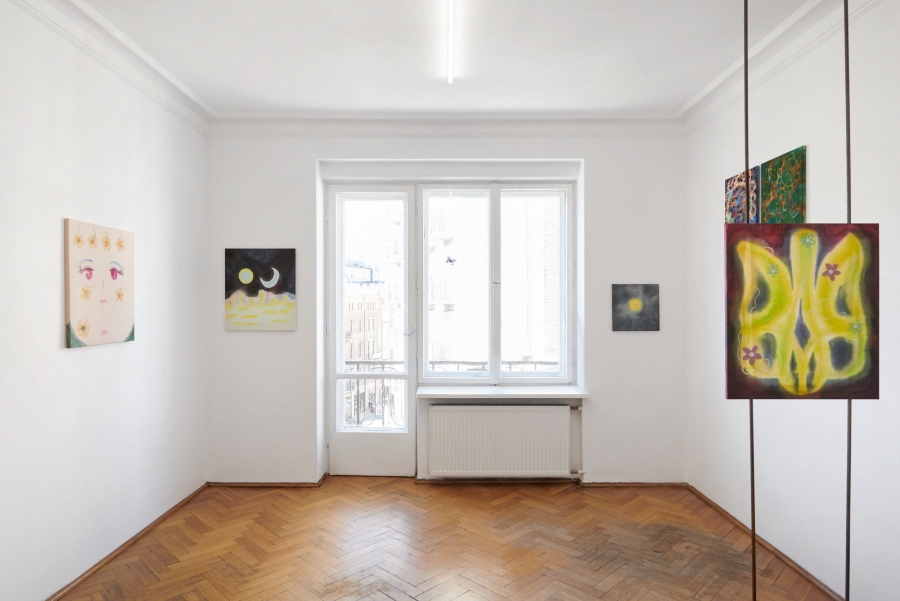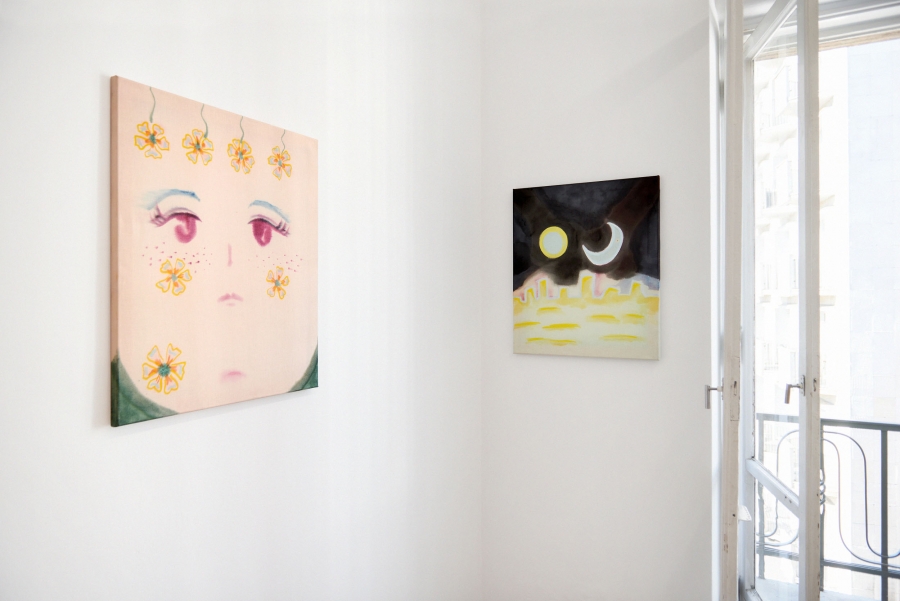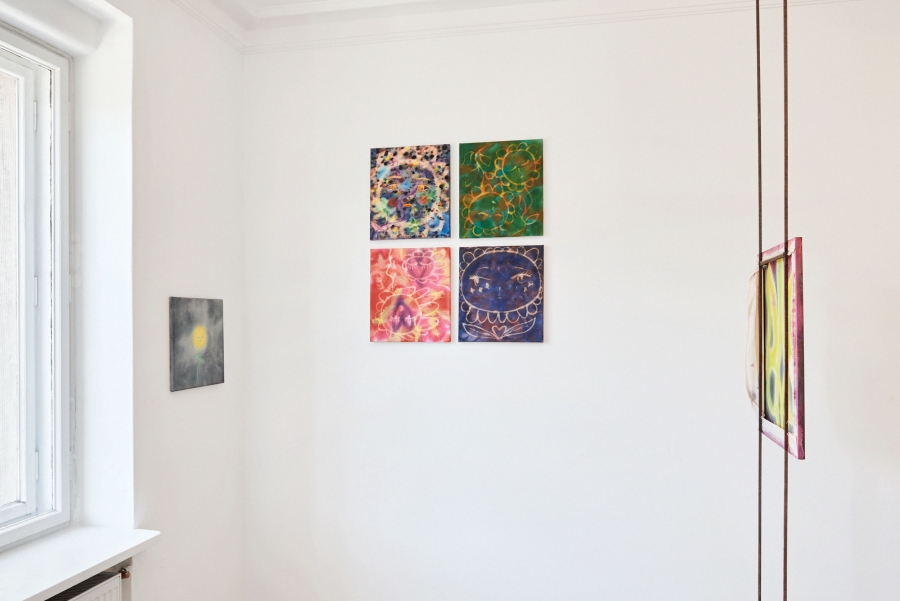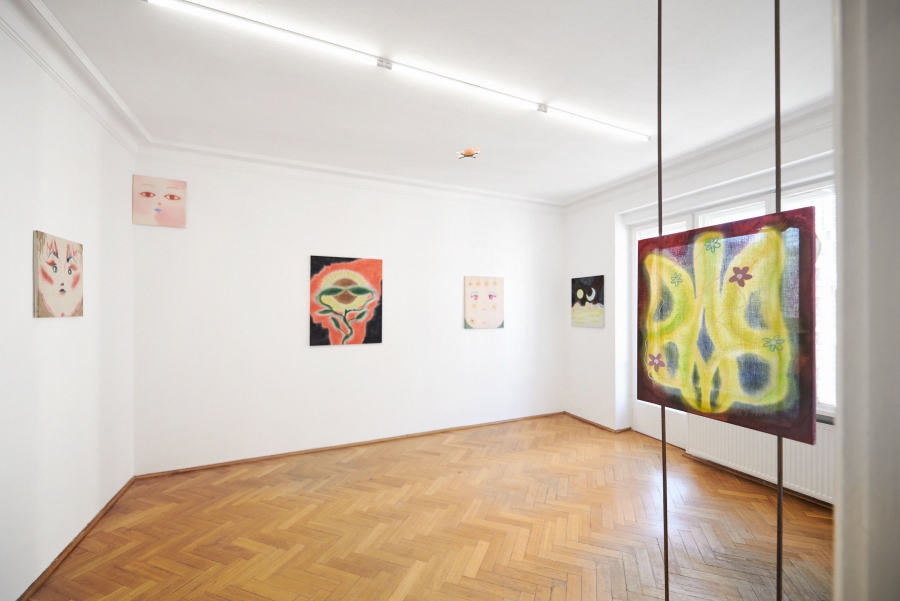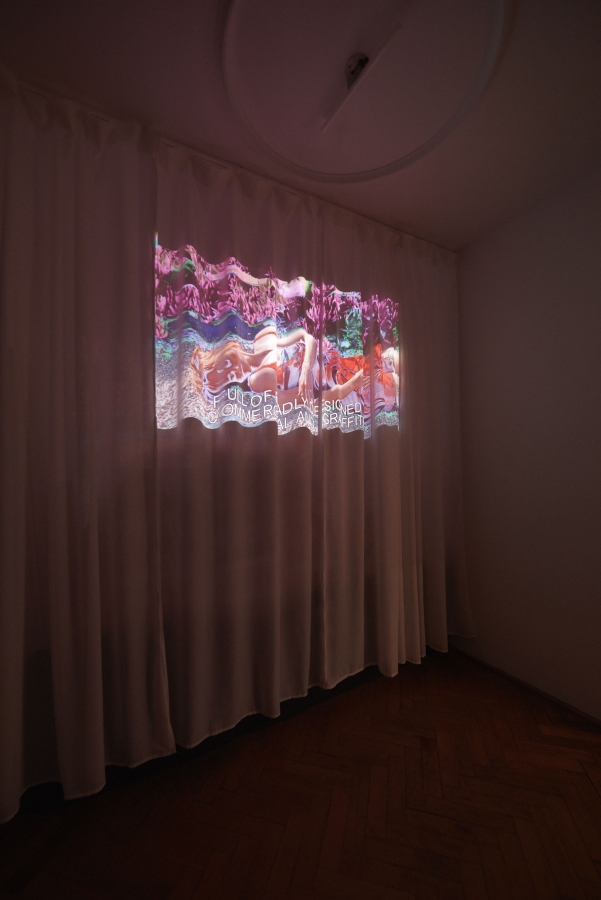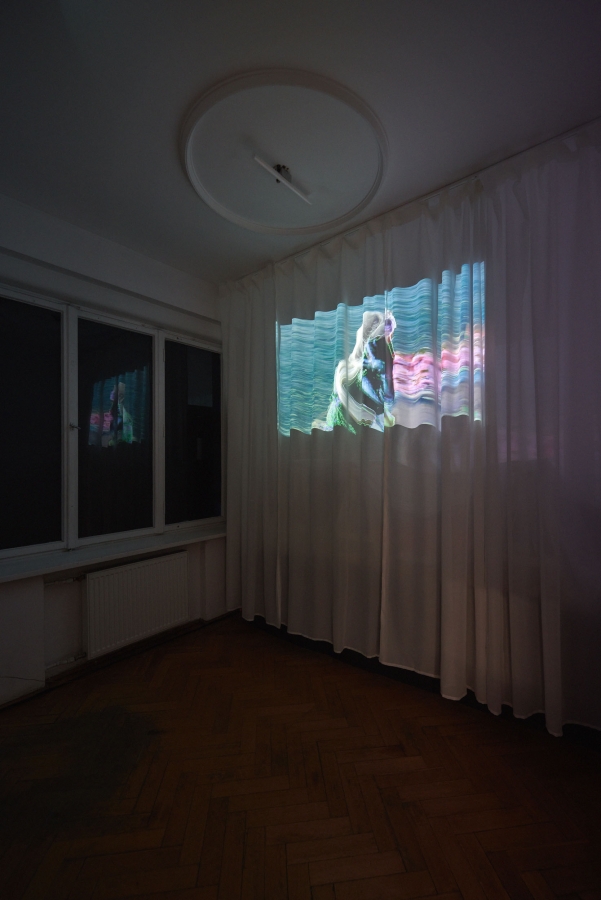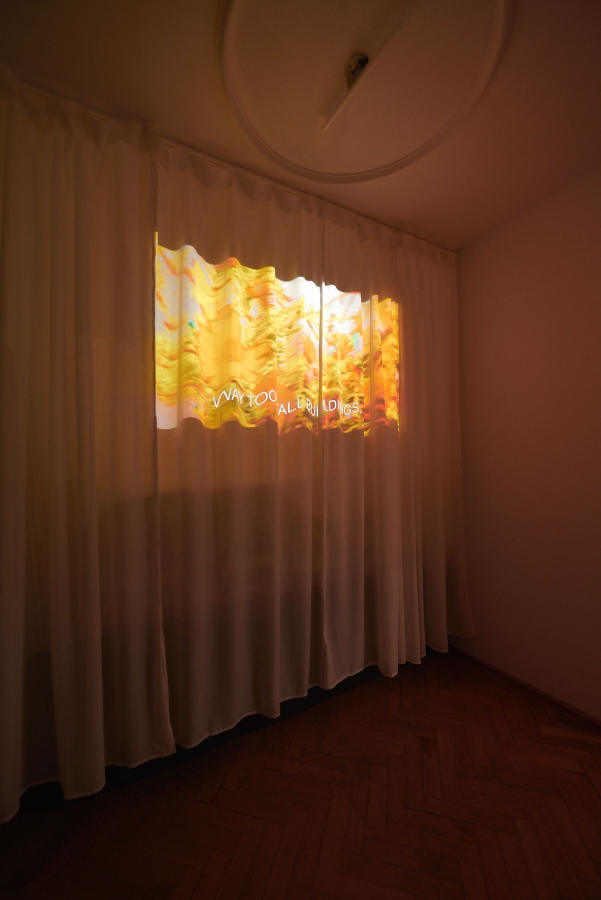(2022) Can you still remember this day?
Olga Krykun
Can you still remember this day?
3-7.09.2022
Wanda gallery, Warsaw, Poland
neither victim
nor participant
nor defender
nor observer
nor outsider
so who
Iryna Shuvalova, "Kyiv-Nanjing"
At a first glance there comes a calming feeling. We know this language; we know how to read it. Plain, almost illustration-like figurative painting seems like a manifestation of a ubiquitous phenomenon that could be summed up in a phrase ‘no thoughts, just vibes’. It’s everywhere, from TikTok to lofi music, offering a simple and wide interpretive framework for our feelings. However, Olga Krykun is one of the few artists that approaches this visual language with a critical attitude, instead of adopting it as a neutral tool for ambiguous storytelling .
Faces without bodies, made up of eyes, noses, mouths and makeup marked with few precise brushstrokes fill up the entire canvases. These are the portraits distilled from digital self-portraits, seen thought the eyes of cameras and app filters. Olga Krykun strips them down to the anatomical bare minimum, but at the same time she gives them distinct features, as if she were to paint a psychological portrait off of a digital avatar. In her paintings she digs into the gap between the deep and the superficial, the portrait and the pictogram, exposing a dark underside of an aesthetic that feeds on glamorizing sadness. She develops this visual language further in the most recent pieces, made in the time of war. Krykun is reacting to it as person caught in between, Ukrainian-born artists living in Prague, connected with Odesa by family roots, but following the news just as many other Czech people do—through the phone screen. War in the Ukraine is a key subject in her most recent pieces, though the artist is not trying to create a pseudo-journalistic depiction of it, reflecting rather on her own position as an observer.
"Can You Still Remember This Day?" is a story of war seen through the eyes of an expat glued to a screen, a story about emotions and symbols circulating within the social media feeds. In recent paintings from "Forget-me-nots" series one of those symbols—the sunflower—keeps resurfacing. Krykun humanizes it, gives it a face and big watery eyes. These, however, are not images to raise people’s spirits. They could be deceptively sentimental, balancing on the edge between rigid and soft, strong and maudlin. Together, they form a self-reflective story of constructing our identity, and raise questions about the symbols themselves—what they mean and how we use them.
